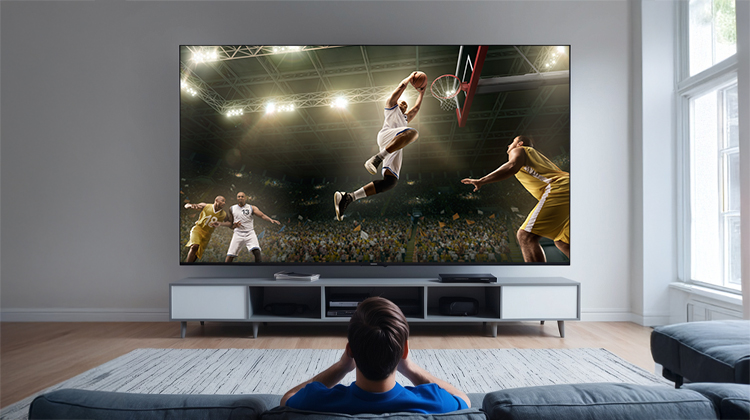AI is revolutionizing the world of sports and creating an enormous impact on the way we capture, engage, and analyze sporting events. As movies, games, and other media have increased our expectation of media, the sports world is also upping its Pro AV game to create sports viewing experiences that match the dramatic, immersive content we experience in other types of entertainment.
In this article, we’ll discuss how AI is helping us automate camera operations, support referees and judges in making decisions, and enabling multidimensional viewing experiences, making it possible for fans to engage in the sporting experience like never before and teams to discover novel insights for post-game performance review.
Automatic Camera Tracking
One of the most important technologies in improving the sport Pro AV experience is the ability to track the ongoing action in a game. Different Auto Tracking techniques work in different ways depending on the size of the sports arena and the goals of the athletes, which all affect the way the action is captured in the sport. For capturing sports like break dancing, the frame follows an athlete on screen. For sports like basketball or American football, the frame tends to capture game action depending on where the ball is located and how the players are interacting on screen. With dual-camera systems, capturing a focused view of where the action is as well as a panoramic view of a game can be done simultaneously with one machine, and multi-camera systems are even capable of capturing the action from multiple angles. Automatic tracking offers viewers uninterrupted focus on game action, whether it's following a player's fast movements across the court or zooming in on the ball during a critical moment, ensuring that fans will never miss a beat.
AI-Enhanced Referee Systems
While Auto Tracking focuses on keeping the action in frame, other AI systems that support referees provide accuracy for critical in-game decisions. Hawkeye technology is used in sports such as tennis and badminton, where plays may need to be reconstructed for line judges to make accurate calls. It utilizes cameras, tracking software, and graphics software to generate a virtual replay in a 3D model of the court. As opposed to traditional line calling with only the assessment of line judges, Hawk-Eye allows for accurate, objective replays that can be generated immediately. In football (soccer), Video Assistant Referee (VAR) systems can help analyze in-game events such as offside, handballs, and fouls, supporting referees by minimizing human errors and ensuring fair play.
Immersive Viewing for Fans

Multidimensional viewing, the capability of allowing audiences to see from every angle through multiple cameras and AI calculations, immerses fans in the game like never before, creating greater engagement and support for the sport and players. The technology requires a large number of video cameras — 38 in the case of the NBA’s 360-degree replay — to be located around an arena or stadium, with AI processing from tech giants like Intel. For basketball fans, it offers higher levels of entertainment, allowing fans to focus on their favorite players. For the players, the 360-degree replays enable players to rewatch specific angles to review their plays.
The Future of Live Sports Broadcasting
According to the NBA, volumetric video, which is video utilizing units called voxels to capture information, will be common in the future. In the same way pixels function for 2D video, voxels will be able to store 3D video information so that an entire scene can be replayed from every angle, definitely something sports fans will thoroughly enjoy.
Some current issues that are challenging for AI include when athletes develop injuries. According to Michael Bais, Chief product Officer of Vislink, AI technologies are often unable to comprehend what is happening. As injured athletes often stop moving, AI systems that track for motion may incorrectly track an athlete who is moving, rather than focusing on the injured athlete. In the future perhaps there will be more accurate AI technologies that will assist with these types of exceptions.
Conclusion
AI is transforming sports Pro AV broadcasting, making it more immersive and dynamic for fans while enhancing accuracy and performance analysis for teams and referees. From auto-tracking cameras to multidimensional viewing and AI-powered referee support, these innovations are transforming how we experience and interact with sports. As technologies like volumetric video emerge, the future of sports broadcasting promises even more groundbreaking advancements, offering fans and athletes unparalleled insights and engagement.